
Medicine ball training is nothing new. People have been using medicine balls for a variety of different training styles for hundreds of years. We make it our business here at KEY2 Sports Training to use the medicine balls during our almost all of our workouts. We like the availability of the medicine ball with regards to is having less limitation than a standard dumbbell/barbell. We also like the different speeds & planes of motion it allows us to assume.
The reason for this post is simple. I have put together a "pre-season" med-ball routine for our athletes that delivers incredible results for producing overall power, muscle endurance and raw strength. This workout is called the "Med-Ball Marathon". We call it this because for the time span of approximately 65-75 minutes we will use nothing more than a standard d-ball (dead ball). We tend to favor the d-ball style medicine ball because of the simple fact that it doesn't bounce. This requires our athletes to have to generate more force with each movement and makes retrieving the ball much simpler.
The workout:
We have used this primarily with our football athletes headed into pre-season camp. The reason we do this workout for approximately 1-3 sessions headed into camp is because it takes much of the stress off the bones & muscle tissue. It also allows us to perform sport specific dynamic movements at sport specific speeds. It also allows us to make the workout time shorter without reducing the overall volume & quality of work. Lastly it allows us to condition while working out as opposed to doing it only at the end of the workout.
Most of our medicine balls are between 6-12lbs. I recommend keeping the medicine ball light but challenging knowing that the athlete will use this same implement the entire workout. For bigger athletes we use the 12lb ball and smaller athletes use the 6-8lb ball.
The sequence:
We break the format up into sections sorta like football coaches do at camp. If anyone has ever been to a football practice you'd observe that they are very structured and time sensitive. There is most likely someone keeping track of time and format so that when the whistle or horn is blown, the athletes know exactly where to go next.
Well, this workout works a lot like that. We start the athletes off on our padded wall. The athletes will begin with the "long response" portion of the exercise. Long response exercises are simply concentric in nature with NO eccentric loading. Speed of movement is very high for all these movements.
The sequence followed is this:
Phase 1
- backward overhead toss (granny toss) x 10 @ wall - goal = height on wall
- vertical squat press w/ jump x 10 @ wall - goal = height on wall
- standing chest pass @ wall x 10
- standing overhead throw @ wall x 10
- standing rotational throw (only done with advanced athletes) @ wall x 8 each
Phase 2
This phase we want a "short response" with an eccentric load added. During this portion we simply partner the athletes up (by size or training maturity). After partnering up the athletes, we follow the sequence of actions where the partner must catch the ball and then return the ball with the same action. Velocity used here is moderate-high. We want the athletes to load efficiently and perform quality movements without making it look like a circus because of all the dropped/poorly thrown balls. We do this sequence for 2-3 sets.
The sequence followed is this:
- horizontal squat jump w/ press x 10 @ partner goal= full-body power and efficency
- standing perpendicular rotational throw x 10 @ partner (partner facing opposite direction)
- standing chest pass x 10 @ partner
- standing parallel rotational throw x 10 @ partner (partner facing each other)
Phase 3
No we want to crank up the intensity a bit. We head our athletes back to the wall where they will now use a "rapid response" style training with the d-ball. In this portion of the training we simply get within one arm's length from the wall and have the athletes perform explosive all out bouts of exercise for either time or reps. By this point in the session we are getting fairly tired because of the intensity of the previous work (which is another reason why the intensity was taken down in phase two). Now we want to perform short bouts of highly intense work with moderate rest periods in between. This would be the equivalent of a group period or 1 on 1 period where intensity is very high for your rep but is followed by a full rest (or close to it). We usually do anywhere from 3-7 cycles of this sequence & it can be done kneeling or standing based on the experience and ability of the athlete.
The sequence followed is this:
- RR chest pass x :6-10 sec @ wall
- RR overhead throw x :6-10 sec @ wall
- RR Perpendicular rotational throw x :6-10 sec @ wall
- RR Parallel rotational throw x :6-10 sec @ wall
- RR Jack Hammers x :6-10 sec @ wall
Phase 4
Strength work. Listen before you criticize me for adding in strength work here after the athletes are almost gassed, remember their practices will resemble this & this portion of the exercise serves more as an active rest than a true strength workout. We will give them a good 3-5 minutes rest after phase 3 before proceeding with this work here. Also, reps are not set in stone. We are simply bringing their heart rates back down a bit and giving them a chance to get a small pump so that all bases are covered. We usually do about 2-3 sets of this sequence.
MB push-up (hands on ball) x 15-25sec depending on the group
MB over head lunges x 8-12 reps each leg
MB over head sit up with throw (we basically throw the ball while doing sit ups) x 8-12 reps each
MB superman's w/ ball held over head x 15-25 reps (face down on ground holding ball off ground and activating lower back for res)
Phase 5
Conditioning! At this point we're ready for team period. We are ready to do a full team drill where we all must pull together to accomplish this goal both individually and as a group. Our exercise of choice is none other than the granny toss circuit. In this circuit we must do a full granny toss (back overhead throw) for as much possible distance as we can. After the throw we go into an all out sprint to go retrieve the ball and will send the ball back to the start point in the same fashion. We do this drill in many ways. 1 way is to ladder the circuits. We'll do 10 followed by 8 followed by 6 each with a shorter rest interval. We'll also do eliminations where the last person in each group has to remove himself to the scout team bracket where he must perform the same drill during the other teams rest. There are many ways to break this drill up for fun and effectiveness. We will usually spend anywhere from 10-20 minutes doing this and then cool down & stretch.
FINISHER- I almost forgot our finisher!! This is ends the whole deal. To explain this exercise i'll add a video here.
This one is called:
Lying press to explosive stand & catch x3-5 each - we do this for more fun than anything but it's a great full-body finisher. Check it out!
I hope some of you trainers out there find this workout both challenging and fun. The athletes I have used this with have loved it while finding it more challenging than your normal pre-camp routines. Give a try and let me know how it works for you!





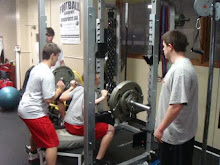
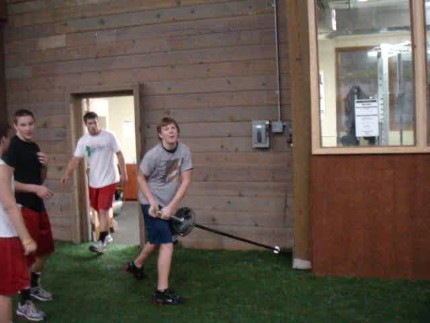

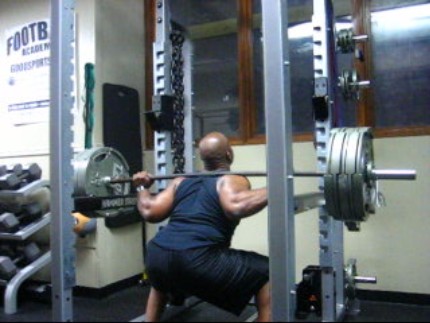
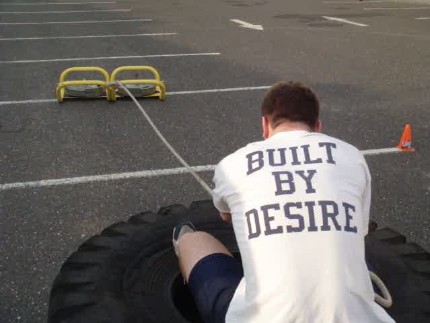
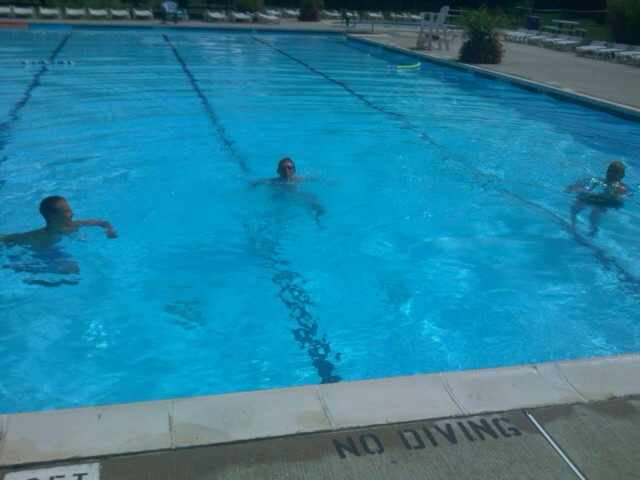
No comments:
Post a Comment